What is UVPM? But here’s an even better question: Is UVPM an accurate metric?
UVPM stands for unique visitors per month and is a measurement that represents how many people have reached a particular website during a specified month. But its meaning is not the same in PR as it is for sales and marketing teams - quite frankly, it's too generic.
PRs often use it because their bosses or clients want to see it, but that doesn’t mean it’s the best way to measure PR success. So, what exactly should you start measuring instead?
Discover the answer by watching the recordings from PR Episodes 2024, where industry experts delved into PR metrics and offered practical tips to enhance your outcomes.
Here's everything you need to know about UVPM and using its alternatives effectively.
- What does UVPM mean?
- How do you calculate unique visitors per month?
- Everything you want to know about UVPM
- What’s wrong with the UVM in PR?
- Four UVPM alternatives
- How to use the alternatives of UVPM with Prowly?
If you’re looking for a tool to track PR metrics that matter, Prowly’s Media Monitoring has them all. Start tracking domain reach, authority, and backlinks immediately and see if the tool fits your needs.
What does UVPM mean?
UVPM (or UVM) is the website traffic measurement for how many unique visitors reached a website domain during a given month. You can find it for a website when reviewing monthly website traffic. It’s also called Domain reach.
For PR professionals the UVM metrics might be helpful to evaluate the potential reach of the media outlet.
If a media outlet has a high UVPM, it means that including a link in the article may generate some traffic for the brand's website. However, keep in mind that it is not a direct correlation.
Why did PR people start using UVPM?
It’s actually quite simple:
- Once upon a time (somewhere in the 1940s), PRs borrowed metrics from advertising teams.
- The advertising numbers were big and made it easy to somehow show value for PR efforts - but not in a meaningful way.
- Then, bosses and clients became accustomed to seeing them, even as PRs grew aware that better ways to measure their success were emerging.
But now there are excellent and more insightful ways to report PR success through PR platforms.
The truth about UVPM in PR
UVPM is thought to give marketing, advertising, and sometimes also PR specialists an insight into the chances of attracting visitors to their brand’s website, whether through SEO or backlinks.
It might be helpful when planning and assessing media outlets that are popular. But it’s not that meaningful when you’re looking for insights about your impact on your target group or the value of publications you’ve secured.
📛 It is a quantitative metric, however, we know the real value comes from a more in-depth analysis of quality metrics related to the brand mention.
But here's what you need to remember:
1️⃣ The bigger UVPM - the bigger potential (not real) brand visibility and reach
2️⃣ If there is link in the article - it can (but doesn’t have to) bring some visitors to brand's website
The UVPM for a publisher’s site is often used by PR pros to report the potential reach of the press placement. But keep in mind that it refers to the whole domain, not the particular site with the article where your brand was mentioned.
So what you can use UVPM for?
To spot some bigger trends related to brand visibility. While comparing the outcomes of the PR campaigns and the reach of media outlets where the brand was mentioned - if you see that you are improving your presence in the media outlets with big UVPM - that's a good sign.
But it's not enough, and it doesn't reflect your efforts or the results. Hopefully, there are better metrics to prove the success of your PR activities.
How do you calculate unique visitors per month?
Well, this probably isn’t a question you would ask yourself as a PR professional. However if for some reason you were asked to calculate your client’s website reach, the good news is - no UVPM calculator is needed.

You can count on website analytics tools like Google Analytics, or Prowly to check your website’s unique visitors per month. You can also find other measurements there, like total page views and unique page views.
But what if you want to estimate engagement by looking at the number of visits per user?
Simply divide the total number of visits by the total number of unique visitors, or use your PR software platform to automatically get answers.
Besides, whether you need to compare UVPM with other websites, including competitors and publishers, or simply check publishers' UVM, you might need to use a PR software platform to gather additional data and utilize other PR metrics.
UVPM vs. Reach: Be careful with UVM as a PR metric
While UVPM can be helpful in estimating the reach of a press mention, it’s just that: an estimate.
Just because a new site receives 1 million visitors per month does not mean that 1 million people read the specific article where your brand is mentioned.
📛 It is also important to note that for some industries, or for local news sites, there will be a significant overlap in readership, and adding up the domain reach of these multiple sites misses that.
Everything you want to know about UVPM
Let's go through the most frequently asked questions to understand what UVM is and isn't before we dive into its alternatives and more details.
What does "unique visitors per month" mean?
The definition of unique visitors is the number of individual visitors to a website in any given period. Only their first visit to the website is counted.
Therefore, a monthly unique visitor count shows the number of individual visitors who reached the website during that month.
UVPM vs. Monthly Total Visits
Unique monthly visitors are different from the measurement for monthly total visits. Calculating unique visitors will not count the same visitor more than once.
How many unique monthly visitors should you attract?
Once again - it's not the question a PR person should answer, because UVM isn't the most reliable metric we can use these days. 😉 But if the C-suite wants to see these results, you might be expected to answer questions like:
- What is a good number of unique monthly visitors?
- Is 1000 unique visitors a month good? (Or whichever number you find)
- How many unique visitors should come to your website every day?
Like with many other metrics - there is no correct answer.
This measurement depends on the company size, the specific industry (e.g. beauty or gaming), your current ad and PR campaigns, and how long your business has been online.
So whenever someone asks you to provide such data, as a PR professional, you use this explanation to show why that's not the best way of measuring PR activities. And propose better alternatives (which you will get to know in the following sections)!
Is UVPM the same as Domain Reach?
Yes, when you see the term “domain reach” in PR platforms like Prowly, the reference is to UVPM and how many visitors a publisher’s website has on average per month.
In other words, it’s showing you the potential size of the audience that saw the press mention.
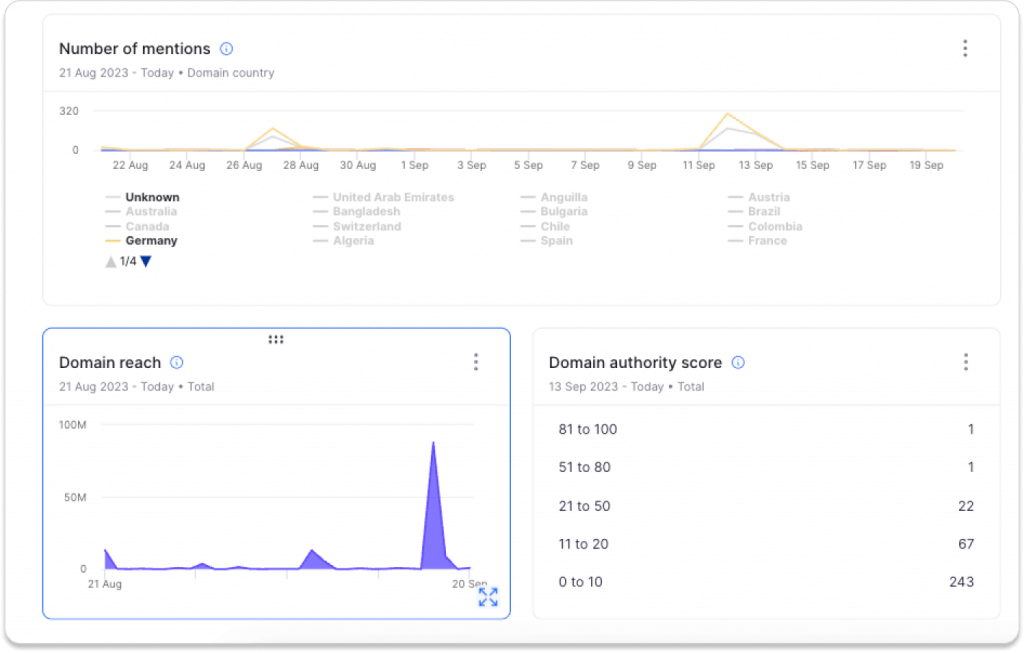
Here's what domain reach aka UVPM looks like in Prowly, in case you need to track it for your client or agency.
What’s wrong with the UVM in PR?
Here is more on why UVPM may not always be considered a reliable metric for today's PR landscape.
📛 No universal meaning
The meaning of unique visitors will change based on what team is looking at it:
- Sales teams use it as a measurement of potential lead generation.
- Advertisers use it to measure the ROI of a paid campaign.
- Publishers use it to sell ad space.
But what is UVM in PR terms?
It’s not as clearly correlated to outcomes as the uses above.
For example, as we’ve just shown in the prior section, UVPM numbers often inflate the real number of readers of your press mention.
📛 Tricky time period
Using a month as the specified time period is also a tricky part of the equation. Media outlets publish hundreds of new stories each day, so the possibility that someone will come across your one brand article over several weeks is rather small.
📛 Impact: unknown
Finally, we still don’t know specifically how the mention impacted our target audience. Was it positively or negatively received? How did it affect brand perception?
To track the mention's impact on your audience, you can use sentiment analysis that's an integral part of Prowly’s Media Monitoring.
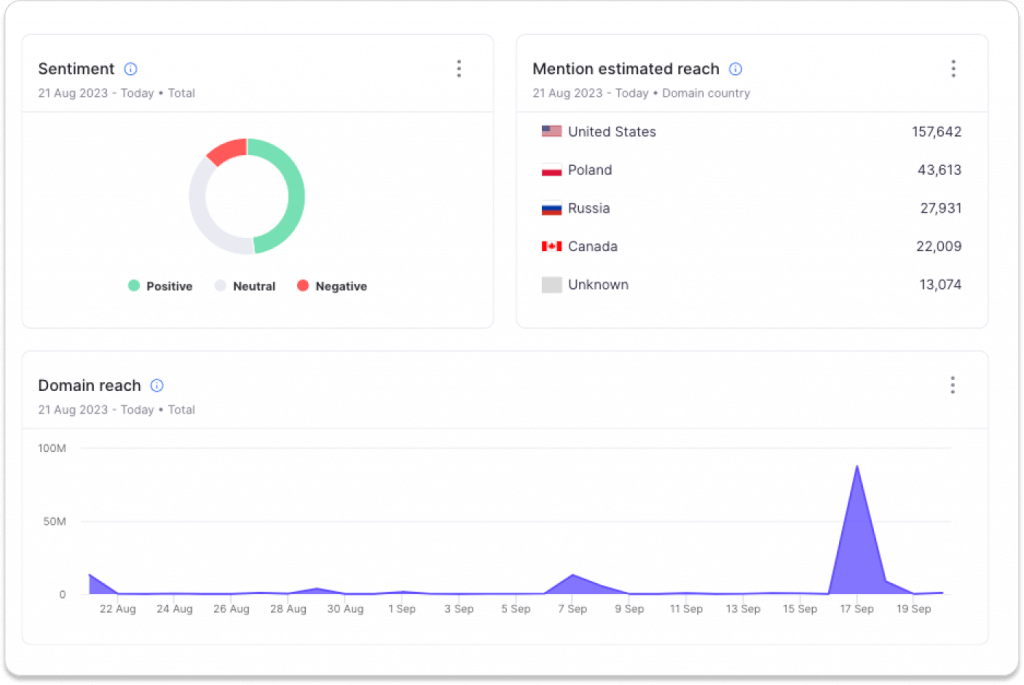
And to make the most of Media Monitoring and track media mentions effectively, take a look at this guide.
Four UVPM alternatives
Being able to use metrics and data is one of the key PR skills. UVPM might be helpful when planning and assessing media outlets that are popular, but it’s not that meaningful when you’re looking for insights about your impact on your target group or the value of publications you’ve secured.
📛 So use UVM with caution and always add quality metrics.
Discover powerful alternative metrics to use instead.
1️⃣ Domain Authority
Domain authority is calculated by Semrush and reported on a scale of 0 to 100. The higher the score, the stronger the authority the domain has. The score reflects a website's overall quality and SEO performance.
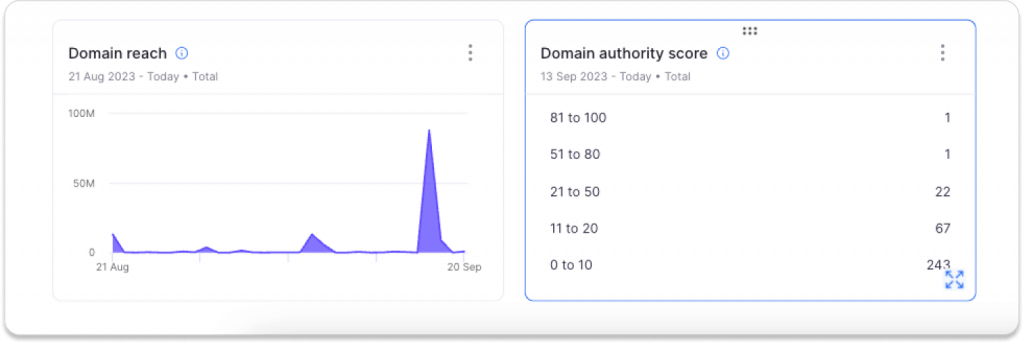
2️⃣ Tracking backlinks in PR
Track the backlinks created by your PR campaign by plotting their publish dates against a timeline of your PR efforts.
Also, in Prowly's PR Reports tool, you can track your PR success by comparing the number of backlinks in different time periods showing for example a year-over-year growth.
3️⃣ Media tiers
Set up media tiers and choose those outlets, where your target audience is - not only based on the number of visitors but actual preferences of your potential clients.
Group those media in Tier 1 - and track how often your brand is mentioned there.
Track the number of press mentions your brand received in each media tier, which we know affects the value of each mention.
4️⃣ Top mentions
Place the most value on your top mentions, the ones that were published in a media outlet that best matches your target audience.
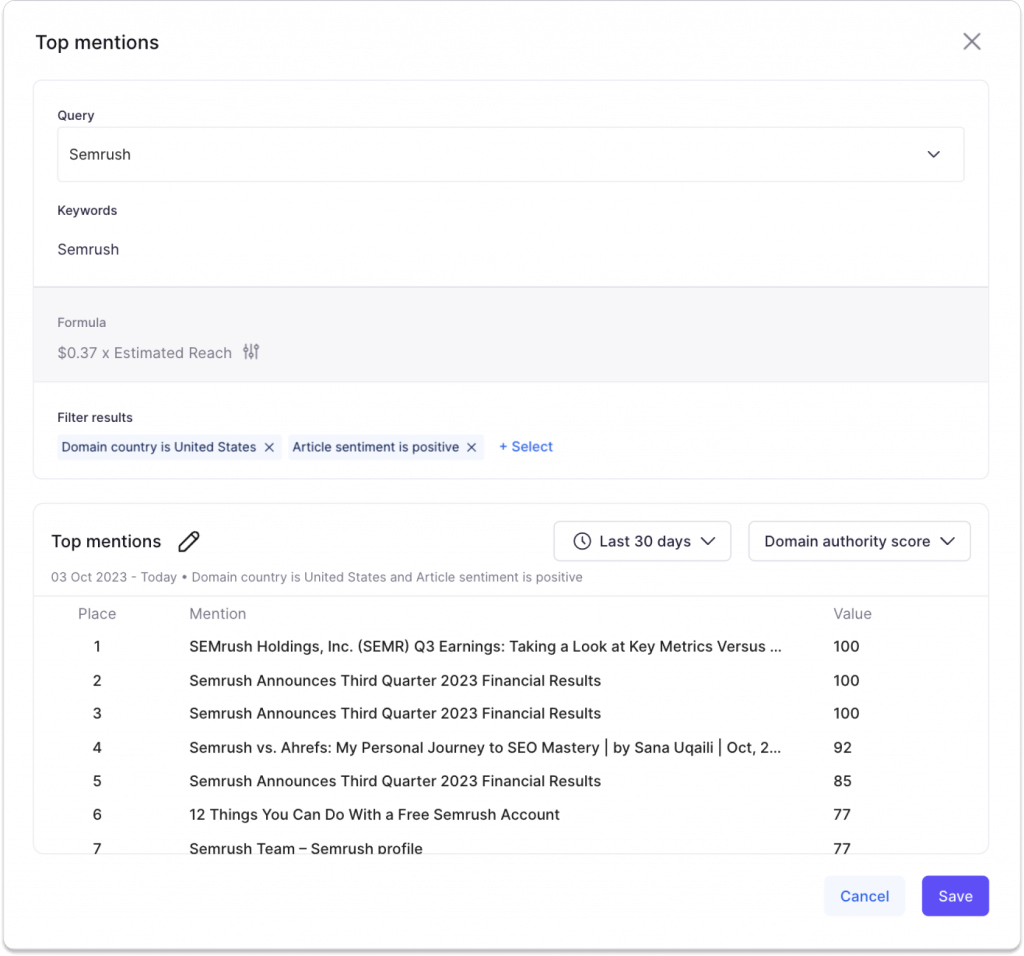
As you can see in the image above, you can easily filter your results by country, sentiment, and more.
Pro Tip: In a PR platform like Prowly, you can generate a list of top mentions from a specific industry category alongside sentiment metrics. Then sort them by their domain authority, which is one of the meaningful metrics to use when measuring your PR activities.
How to use the alternatives of UVPM with Prowly?
The dashboards in Media Monitoring are intuitive and cover all the information you need.
You can collect and monitor the most important metrics in one place, allowing you to easily track your progress.
Where does Prowly data come from? Domain Reach, Domain Authority, and Article Reach are calculated by our partner, Semrush, so you can be sure it’s always up to date.
Track domain reach, domain authority, and backlinks in Media Monitoring
With Prowly, you can use its Media Monitoring tool to quickly track multiple queries like brands, competitors, keywords, people, authors, and backlinks. You can also filter these queries by country, language, and more.
🔗 Backlinks are counted automatically and you will see them in the main Media Monitoring dashboard for the project.
Each mention will include valuable insights like:
- Backlinks, so you know where your website is linked.
- Domain Reach (UVPM), to see how popular the domain is in terms of visits.
- Domain Authority, to reflect a website's overall quality and SEO performance.
- Article Reach, to show how many times the article was viewed.
Highlight media tiers, and domain reach in PR Reports
Did we mention PR reports?
You can analyze and organize mentions with tags when creating your automated PR reports.
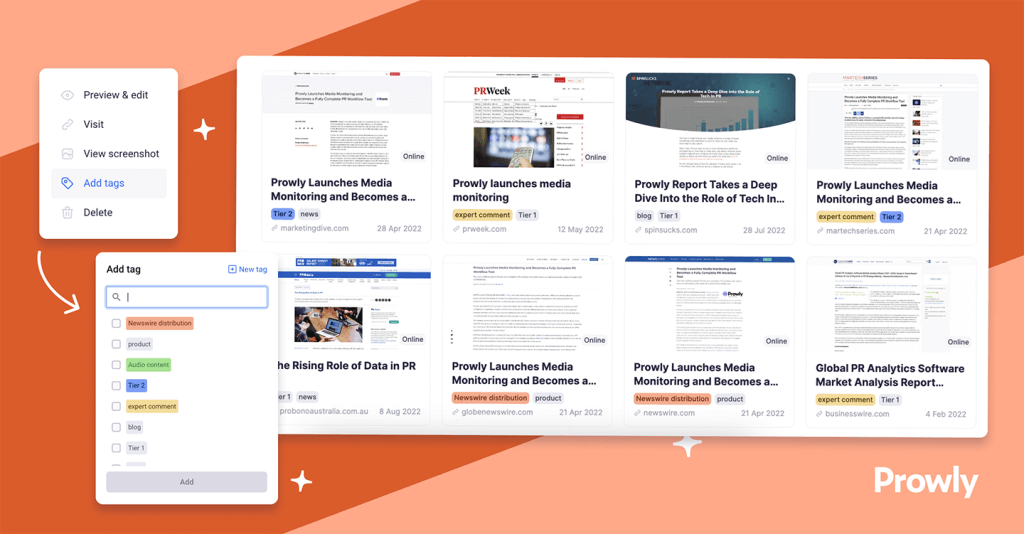
This means you can:
- Highlight campaign KPIs such as media tiers and domain reach.
- Categorize your mentions with relevant tags and colors to help clients understand the value of your work.
- Use the same tags across both coverage reports and contact lists so you can plan your campaigns more effectively.
Sort data and choose top mentions in Media Monitoring
You can also sort mentions and order them by your exact preference. Sort by article reach, backlinks, date published, domain authority, and domain reach.
The Top Mentions widget further helps by displaying which mentions are the most important and the top 10 mentions for each of your search queries. It allows you to view your dashboard and immediately see what coverage provides the best results for your PR activities.
Results can also be based on one of the PR-relevant metrics available, such as domain authority score, domain rank, or estimated reach.
You can also use classics, including AVE or domain reach (UVPM) if needed. However, here's a whole article about AVE (and its alternatives) that shows why it isn't too accurate nowadays.
You can track all of these metrics in Prowly and start measuring your PR results with ease (and a lot of sense).
Conclusions
In conclusion, while UVPM may provide some insight into the potential reach of your PR efforts, it fails to provide a comprehensive evaluation of your campaign's impact.
Measuring PR success calls for a more multi-dimensional approach, considering factors such as domain authority, tracking backlinks, media tiers, and top mentions.
Prowly offers intuitive and effective tools to track these metrics, providing valuable insights on your PR campaign's reach and impact.
Don't settle for just numbers; get insights that truly matter.

